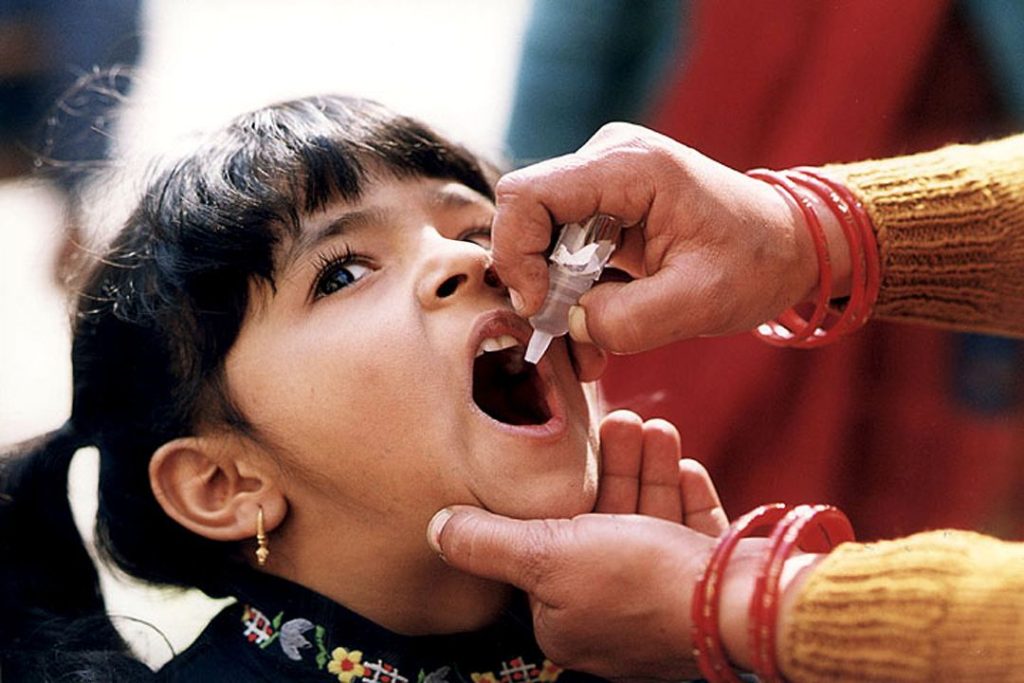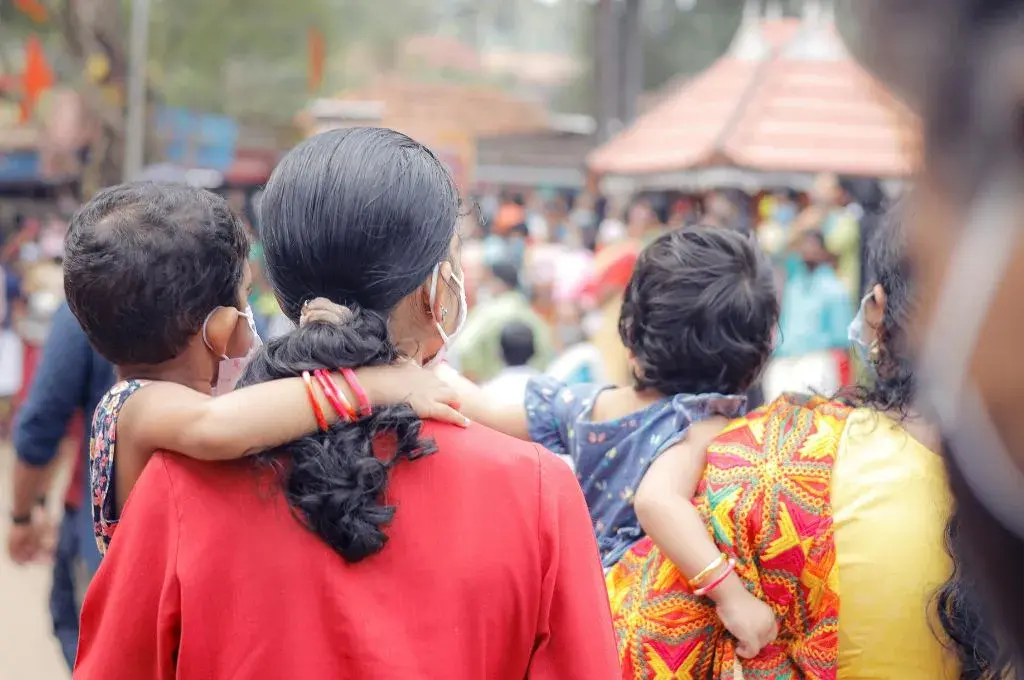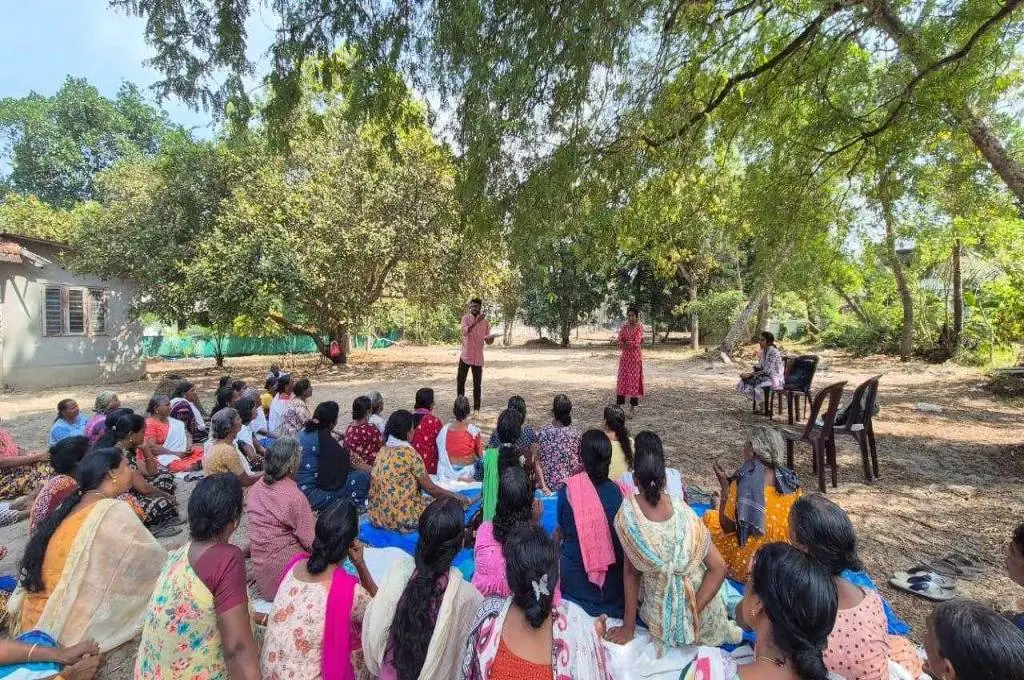Health coverage in India has remained low, given chronically low level of public health spending, at around 1% of gross domestic product (GDP). A majority of Indians rely on private spending for health. High ‘out of pocket payments’ during illness places a dual burden on vulnerable groups. Poor people often forego treatment because of unaffordability, resulting in poor health outcomes and continued high burden of diseases. Catastrophically high levels of expenditure on treatment further deepens poverty, when the poor meet medical expenses by exhausting their savings, or selling assets, or by taking loans.
A proffered solution is to provide publicly funded health insurance schemes, alongside efficient primary care in public systems. This could potentially become an equitable approach to protect poor families from the impoverishing effects of health expenditure and hospitalisation and a step towards universal healthcare.
India has had health insurance schemes for decades, but they have largely been confined to a small, elite section of the population. In 2018, though, the union government launched the Pradhan Mantri Jan Aarogya Yojana (PMJAY) to consolidate and expand the various state and union government schemes for health insurance. At its launch, PMJAY promised to cover more sections of the population, include more healthcare services in its ambit, and reduce out-of-pocket expenses for beneficiaries. It aimed to consolidate various state government schemes for subsidising healthcare and provide a uniform standard of coverage that could be availed of anywhere in the country.

How has the performance of PMJAY, which provides a cover for select secondary and tertiary hospitalisation for beneficiaries, been through the four years of its existence?
Consolidating past initiatives
Independent India has had some form of health insurance since the beginning. The Central Government Health Scheme (CGHS) and the Employee State Insurance Scheme (ESIS), launched in the 1950s, offered health coverage to salaried households. Public sector insurance companies began to offer medical insurance policies from the 1980s. Commercial health insurance took off with the opening of the sector to private and foreign investment and the introduction of for-profit health insurers and cashless hospitalisation in the 2000s.
The poor, those in the unorganised sector, and rural communities largely remained uncovered by these developments, despite small-scale efforts by non-governmental organisations (NGOs) to provide limited health coverage at low prices. There were some government programmes too, like the Yeshashvini scheme in Karnataka (2002), Aarogya Sri in Andhra Pradesh (2007) and the union government’s Rashtriya Swasthya Bima Yojana (RSBY) (2008). Other states too either launched their schemes or piggy-backed on the RSBY to expand the scope of coverage.
There have been several instances of out-of-pocket payments in PMJAY due to state policies restricting certain procedures to government hospitals.
PMJAY was launched to take these fragmented initiatives forward. It covers hospitalisation, day-care surgeries and procedures, and pre- and post-hospitalisation expenses—but not outpatient treatment and diagnostic procedures. The scheme offers 13.44 crore families (equivalent to 65 crore individuals) an annual coverage of Rs 5 lakhs per year. Being an entitlement-based scheme, all eligible families are automatically covered under the PMJAY.
Currently in its fourth year of implementation, PMJAY is run by the National Health Authority (NHA) at a central level, in financial and organisational partnership with states and UTs.1 Beneficiaries can choose amongst the empanelled hospitals. Any healthcare provider can join the scheme if they are willing to provide hospitalised treatment for specified ailments at a pre-decided lump sum price. (Providers are also incentivised through additional payments if they are certified by accreditation agencies as having an improved quality of care.) The states can fix rates, decide on how to make payments, and decide on the use of revenue generated by public hospitals empanelled under the scheme. States can also reserve certain health benefits packages under the scheme for public hospitals. They can also offer additional services. For instance, Gujarat also provides transportation to patients at the time of discharge.

These flexibilities offered to the states are useful to respond to the local needs. However, they can be potentially counter-productive. There have been several instances of out-of-pocket payments in PMJAY due to state policies restricting certain procedures to government hospitals. While this is done to ensure retention of public funds in the public system, it might end up in beneficiaries going to private hospitals and paying on their own because nearby government hospitals might not have the required facilities.
Such payments are also made in cases where patients are admitted to empanelled private hospitals for a treatment that requires multiple packages, some of which might be reserved for public facilities. State-specific reservations also affect the portability of the scheme: beneficiaries might be covered in one state but might have to pay if they seek care in another.

Assessing PMJAY
The PMJAY website and a series of government documents list the scheme’s performance in terms of the number of cards distributed, hospitals empanelled, hospitalisations, and payments made. However, this data says little about actual impact of the scheme. It does not tell us what proportion of the population is covered and able to avail quality health benefits from their choice of providers without facing financial hardships.
For instance, the PMJAY website tells us that that there have been nearly 2.3 crore hospitalisations into mid-November, worth more than Rs. 25,000 crores. Such cumulative numbers reveal little about what percentage of the population is covered, what services could be availed, and how much expenditure was covered, or on rates of enrolment and utilisation.
How do we then assess the performance of PMJAY since its inception?
First, how far has the scheme covered the population? While there are no formal targets in PMJAY, data shows that 16.8 crore individual Ayushman cards were issued by mid-November. (These cards are issued to verified beneficiaries to enable them to access cashless hospitalisation.) If one takes the card as the manifestation of actual coverage, the scheme needs a long way to cover its potential 65 crore potential beneficiaries, with possible inter-state variation in trends of coverage.
The second aspect is the extent of services covered. PMJAY is a hospitalisation scheme; leaving uncovered most out-patient treatment, including the cost of diagnosis and medicines. Unlike ESIS and CHGS, which cover almost every health event, PMJAY covers only specified procedures. While it does have a provision for ‘unspecified’ procedures, it is difficult to ascertain how far ‘universality of coverage’ has been achieved.
A third aspect is whether PMJAY has reduced India’s high out-of-pocket spending, which the latest estimates (NHA 2017–18) place at 49% of total health expenditure. A big share of such spending is for out-patient consultations, medicines, and diagnostic tests, which are out of the purview of PMJAY. More evidence is required to estimate the impact of PMJAY on the reduction of actual out of pocket expenses while availing of hospitalisation under the scheme.
The out-of-pocket spending in PMJAY could be for various reasons. Hospitals may ask the patients to pay for pre-operative diagnostic procedures to hedge against costs if the patient does not need to be hospitalised. Patients in empanelled private hospitals may be asked to pay for treatments that are reserved under PMJAY for public facilities. This is especially a concern in conditions like cancer, which require multiple treatment modalities.
The pandemic brought to the fore the limitation of the health system in general, and the limited ability of the PMJAY to ensure adequate financial protection to its beneficiaries.
Hospitals could charge additional payments if the medical inputs like implants they use cost more than the standard rates of compensation under PMJAY. Patients may also be asked to pay for the difference in costs if the hospital chooses a treatment that is different from what is covered as a package reimbursement. Research on the early implementation of PMJAY refers to several such instances and offers avenues for better strategic purchasing and improved provider payment mechanisms.
The pandemic effect
The problem of out-of-pocket payments in PMJAY was especially relevant during the Covid-19 pandemic. Treatment needs have escalated over the last two years, especially during the exponential increase in infections and death during the second wave of infections in March and April 2021. The second wave exposed the vulnerability of the already fragile health system in India as people faced an acute shortage of medical oxygen, hospital beds, medicines, and other medical necessities.
The NHA indicated that there was a decline in the uptake of PMJAY hospitalisations between April and June 2020, the locked-down quarter, to 13 lakhs from 22 lakhs in the prior quarter, and between April and June 2021, during the second wave, to 16 lakhs from 24 lakhs. By official estimates, 3.3 lakhs hospital admissions were authorised under PMJAY towards Covid-19 treatment in financial year 2020–21. According to an independent analysis, between January 2020 and June 2021, just 5.85 lakhs hospital authorisation out of over 1.7 crores total hospitalisation—or 5%—were reported as Covid-19 treatment. The massive drop in hospitalisation under PMJAY could have been because of the reduced non-Covid-19 hospitalisations during the pandemic or the inability of PMJAY to provide Covid-19-related hospitalisation when needed, especially during surges.
The reduced uptake of PMJAY hospitalisations in private hospitals during the pandemic could have been because medical procedures for Covid-19 treatment under the scheme were reserved for government hospitals. There were also instances where some centres, like in Ahmedabad, stopped cashless hospitalisation for Covid-19 cases. Such actions remain detrimental as PMJAY does not reimburse beneficiaries for costs, even if the procedures were covered under the scheme.
Overall, the pandemic brought to the fore the limitation of the health system in general, and the limited ability of the PMJAY to ensure adequate financial protection to its beneficiaries. Such limitations remain obscured when the scheme measures its performance in terms of actions rather than outcomes.
A way forward
PMJAY needs to analyse its ability to deliver fair and responsive financial protection to its beneficiaries. It needs to improve on wait-time for pre-authorization and discharge and turn-around time for claims payment to the providers to improve the efficiency of the scheme. Ultimately, the PMJAY needs to move forward in a direction where it celebrates a range of meaningful indicators of performance affecting all stakeholders, beyond mere numbers.
Inefficiencies in design and implementation increase the burden on beneficiaries, who end up either delaying treatment or paying out of their pocket, defeating the very purpose of the scheme. Healthcare providers have demanded regular revisions in the package rates to reflect market realities. Hospitals in Punjab, for example, declared in September that they would stop admitting patients under PMJAY, highlighting the issues of coordination between providers, payers, and insurers. This is despite the National Health Authority increasing the rates of covered procedures under a more market-aligned list of healthcare benefit packages,2 which included the addition of new procedures, realignment of multimodal, cross-specialty, add-ons, and follow-up procedures, and the introduction of the more nuanced package for unspecified procedures.3 The role of public providers in PMJAY also needs to be improved judiciously without limiting the choices of the beneficiaries. As all public facilities across a state do not offer similar services, a blanket public reservation that limits coverage issues needs a relook.
State-level data on authorised hospitals admissions by total count and the total value of payouts or claims under PMJAY indicates that Tamil Nadu topped the list in both parameters. Tamil Nadu, Gujarat, and Kerala jointly contributed to nearly 40% of all admissions and payouts. Although Kerala had 13% of total hospitalisations, it accounted for only 8% of the total value of hospitalisation. Andhra Pradesh, on the other hand, accounted for only 6% of all hospitalization but had nearly 15% of value. Andhra Pradesh also had a high average value per hospitalization of Rs 28, 455, more than double the national average of Rs 12, 389 and nearly four times that of Kerala at Rs 7, 721.
The PMJAY needs to first consolidate its existing coverage before expanding further.
There is a sizable scope of improvement in the beneficiary identification and issuance of Ayushman cards. A new initiative called Aap Ke Dwar Ayushman (a campaign to increase awareness about e-cards) aims to fill this gap in the time to come. To ensure greater enrolment and verification, NGOs can be involved to reduce the burden on overworked grassroots-level health workers. Innovative methods based on behavioural insights can increase the awareness of beneficiaries and help them better avail benefits. A well-advertised and functional grievance redressal system can further add to the trust and efficiency-building measures.
Pause to consolidate
The Niti Aayog advocates using PMJAY to provide health insurance coverage to the ‘missing middle’. Since its launch, PMJAY has launched pilot projects to incorporate existing schemes like CGHS and ESIS and tried to expand coverage to building and construction workers. Various states have expanded PMJAY coverage to non-poor segments of the population.4 Such scheme-level convergence and state-level expansion reduce fragmentation of efforts to cover a large population while simultaneously improving the efficiency of coverage. The PMJAY needs to first consolidate its existing coverage before expanding further.
From the larger perspective of achieving universal healthcare, PMJAY has a limited focus on select secondary and tertiary care hospitalisation. India needs to strengthen its health and wellness centres, which provide primary care. An improved referral system between the primary care centres and the PMJAY remains a crucial missing link.
This article was originally published on The India Forum.
—
Footnotes:
- West Bengal, Delhi, and Odisha are not part of PMJAY. Costs are usually shared in a 60:40 ratio between the union government and respective states and union territories. In the case of the seven North Eastern states, Himachal Pradesh, Uttarakhand, and union territories that have legislatures, the union government bears 90% of the costs.
- The revised version of HBP introduces flexibilities in the form of new concepts to simplify and improve utilization of packages and procedures. It allows booking of treatment modalities that requires combination of more than one procedure. Cross Specialty Packages are packages that fall under more than one specialty without duplication of the unique package code and maintaining a uniform price for the same procedure across all specialties. Add-on Packages are certain packages/procedures that need be booked in conjunction with another procedure without losing the sanctity/price of the procedure. Follow up procedures are useful when the hospital/caregiver needs to maintain a continuum of care to the patient for a period extending beyond the 15 days that he/she is entitled to through the original AB PM-JAY package.
- To ensure that PM-JAY beneficiaries are not denied care, for treatments/procedures that do not feature in the listed interventions, there is an exclusive provision that has been enabled in the TMS (transaction management system) for blocking such treatments, subject to satisfying certain defined criteria. High consumption unspecified from HPB 1 has been introduced as new packages in subsequent HBP versions. In the revised versions, the conditions and procedures for using unspecified is well laid out. Also, there is a provision to cover unspecified packages worth more than INR 1 lac through laid out procedures, separately for public and private hospitals.
- These include Himachal Pradesh (Himachal Healthcare Scheme: HimCare), Jammu and Kashmir (PMJAY Sehat), Assam (Atal Amrit Abhiyan), Chattisgarh (Dr. Baghel Swasthy Sahayata Yojana), Goa (Deen Dayal Swasthaya Seva Yojana), Kerala (Karunya Arogya Suraksha Paddhati), and Maharasthra (Mahatma Jyotiba Phule Jan Arogya Yojana).




